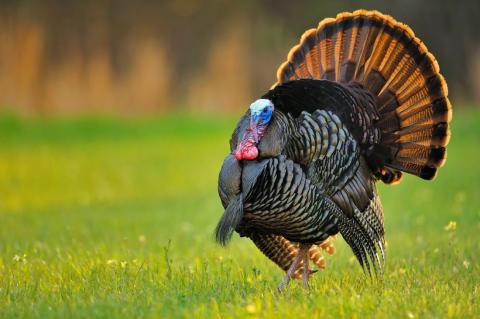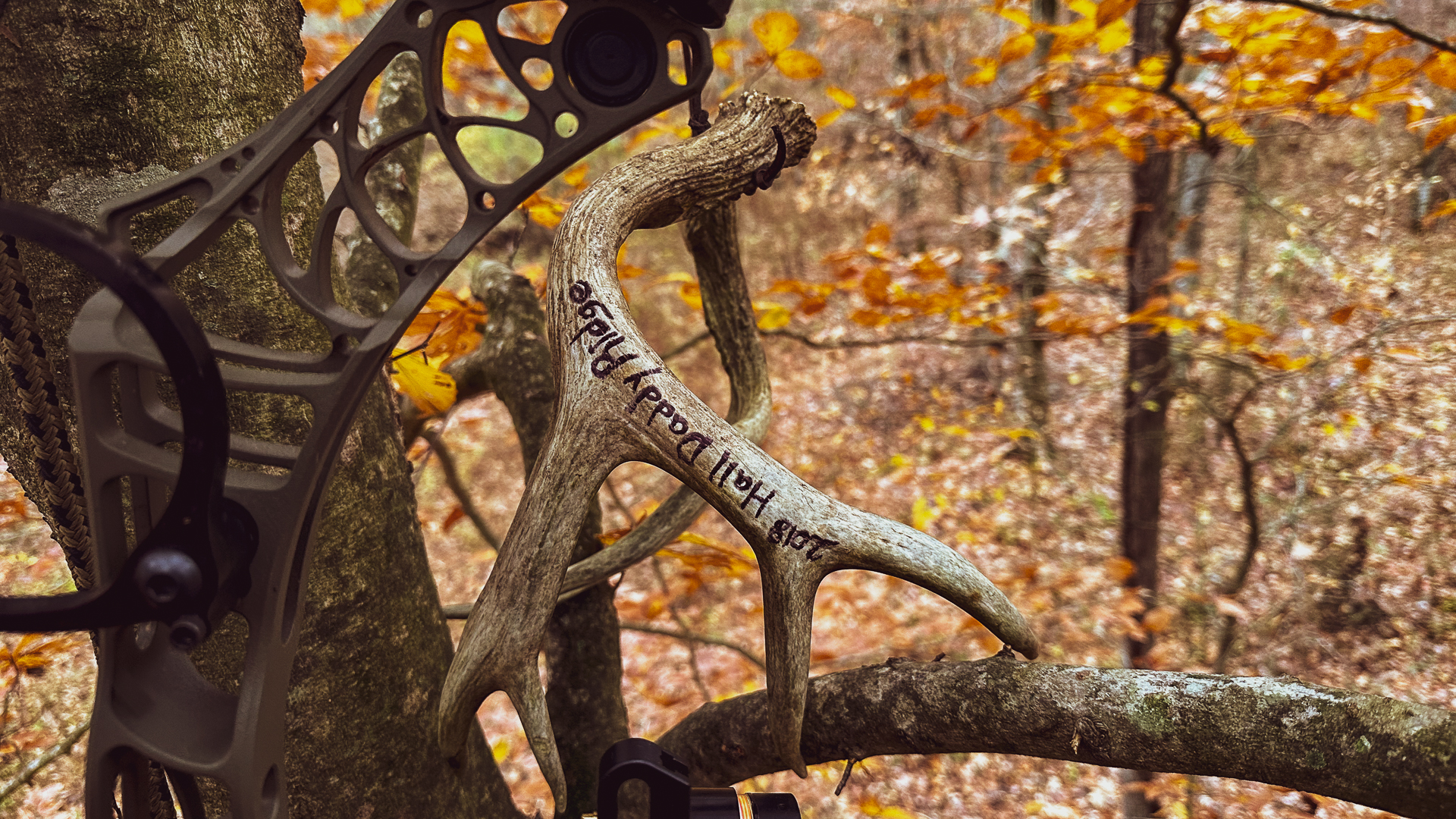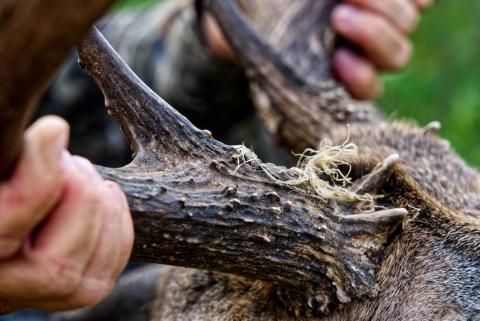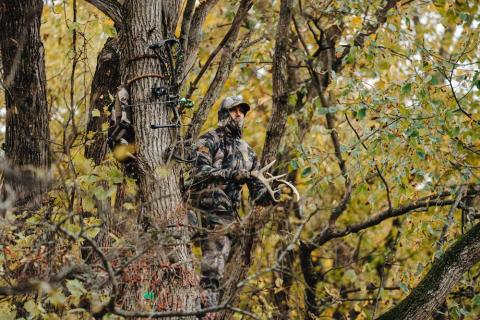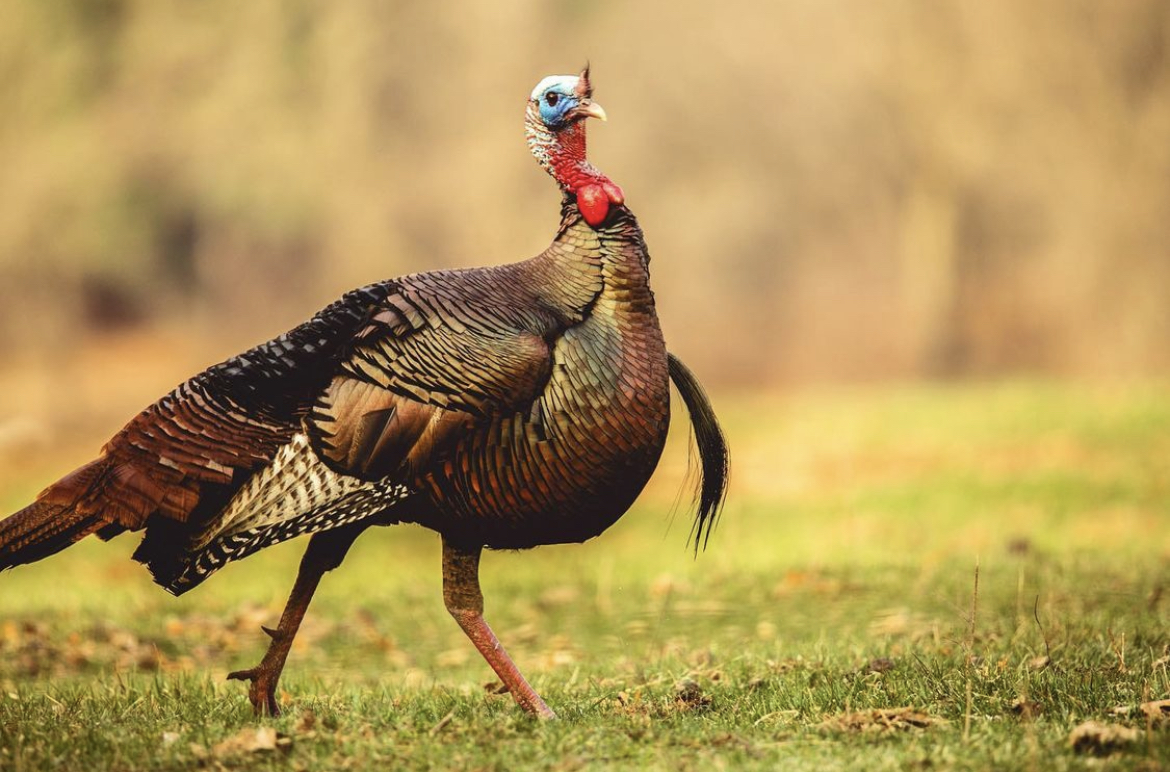
Photography by Levi Glines
Written by Bob Humphrey
After a day of futility trying to call up a wily old field bird, my hunting partner and I came up with a new plan. We gave him the morning off, then slipped into a hardwood finger that jutted partway out into the pasture. It was 2:30 p.m. when I sat down. For five hours, I barely moved, making only a few faint purrs on my slate and scratching in the leaves every 30 minutes.
At 7:15, the bird shock-gobbled to a crow, which was the only way we knew he was coming. At 7:30, I spied him and his chestnut feathers sneaking along in our general direction. At 7:45, I put him in my vest. He only weighed 14 pounds, but he had inch-and-a-half spurs.
Turkeys, like people, have different personalities. Some are bold and reckless, strutting in without hesitation. Others are cautious, hanging back and testing your patience. And then there are the truly frustrating ones—the birds that seem almost wise, as if they know every trick in the book. To be successful, you need to do more than just call and wait. First, you have to recognize the kind of bird you are dealing with. Then, you have to adjust your approach to match. That old field bird I hunted was a perfect example—he wasn’t going to come running at the first yelp. It took patience, subtle calling, and the right setup to finally outsmart him. In the following sections, I’ll break down some common turkey personalities and the best strategies for each.
Wimps
Woke culture would probably prefer us to use a different term, but the fact remains, they exist. These are longbeards that have been beaten so far down the pecking order they won’t even consider approaching a hen for fear of getting their fan kicked, and they’re certainly not coming to a call, at least not directly.
They can be as challenging to kill as a henned-up boss. However, their propensity to avoid danger may result in a longer life and, therefore, longer beards and spurs, making them worth the effort. They tend to be loners, occasionally visiting flocks rather than following or joining them, perhaps to see if anything has changed in the pecking order. Then, they almost always get run off.
If your goal is one of these outsiders, you want to set up on the periphery rather than in the middle of the action. It’s a bit like hunting mature bucks on a food plot. They might come out in the open, but they’re far more likely to hang up inside the woodline and check things out from a distance.
It may take several attempts, but if you notice the wimpy bird approaching and departing in more or less the same location, you’ve got a prime ambush spot. Just sit and wait for the other birds to do the dirty work.
Sneakers
It is said that turkey hunting is like elk hunting, except if they could smell you, you’d never kill one. There’s a certain amount of truth to that. Dominant bulls gather and defend harems like boss gobblers tend their flocks. And both must be ever-vigilant of rivals. There’s always some subordinate male out there waiting to commit kleptogamy, or what some scientific journals refer to by a term we can’t share.
They’re not going to saunter in while the boss is nearby but they’ll be ever-patient. After he and his harem have wandered a safe distance away, there may be a few stragglers or lingering hens around and it is they the sneaky fellas seek. In addition to being patient, you also need to be vigilant. Instead of announcing their arrival, these subordinate or satellite longbeards are more likely to sneak in silently and very carefully. They’re also likely to be on full alert, so take the first shot you get.
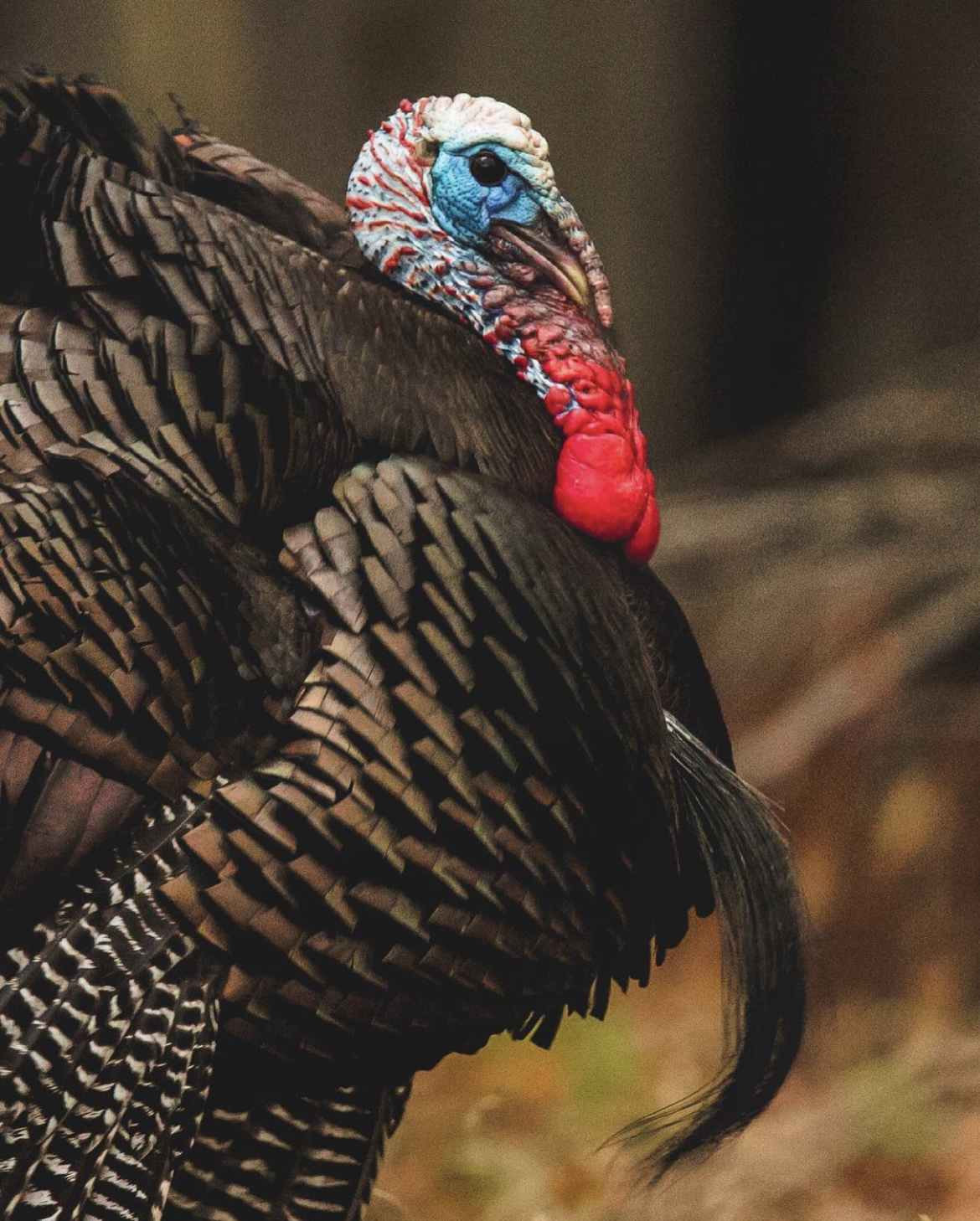
Photography by Levi Glines
Where I live, we have exceptionally heavy hunting pressure and occasionally severe winters. Some years, about the only longbeards left come spring are wily old veterans that have survived two, three, or even four hunting seasons. It doesn’t matter if it’s two weeks before the season opener, when the urge to breed is peeking, or two weeks into the season when most of the hens have gone off to nest, they’re not coming directly to a call. In fact, they may avoid it.
Since the basic premise, in fact, the very foundation of spring turkey hunting is to call a gobbler into gun range (25-30 yards, not more) and shoot him in the face, you’re going to have to compromise your standards. Ambush is a viable option and requires a good deal of intensive scouting to tease out patterns.
Extreme patience, bordering on endurance, is another. These birds might gobble to your calls but won’t come to them. I’ve watched solo longbeards gobble and strut for hours in the middle of an open field. If they do that, shut up and wait. They know exactly where you are, and while they won’t come to a noisy hen now, they may eventually make their way over to where she was.
You might find yourself waiting for 3 or 4 hours, but sometimes, that’s just the price you have to pay if you want to bag that bird. Patience can be your best friend in these situations. I’ve noticed that many Gould turkeys are seasoned veterans, making them especially tricky to hunt. Their experience, paired with their impressive size, means that catching one of these birds is no easy feat—but when you do, it’s a pretty amazing accomplishment. Their sheer size and cleverness make them a trophy worth waiting for.
The Overly Inquisitive Type
Some people like to call these rubber-neckers, but I sometimes call them busybodies since they’re always a little too curious about whatever’s going on around them. As a result, they kind of pose an issue for the turkey hunter because they love to know about everything and everyone in their nearby environment. While these seldom look alarmed, you can always recognize them by the fact that their necks are almost always outstretched, passively checking out the area.
If you’re cautious, you can actually neatly sidestep the curiosity of these annoyingly inquisitive wild turkeys. I typically freeze in place and don’t look them directly in the eye - it just takes a little patience and a comfortable position. These gobblers are usually not smart enough to recognize that you’re a hunter and not just a weird tree. If they get closer, which happens about 50% of the time, you’ll have bagged a nice-sized turkey. And they say that curiosity killed the cat - I guess “they” never hunted turkey!
Movie Stars
Everybody loves movie stars. Just like their human counterparts, they’re arrogant, vain, and impulsive, and they think with their...hearts. They saunter boldly into our decoys in full strut and parade around like fashion models. These are the birds that give us satisfaction, confidence, and validity. They make novices feel like heroes and provide veterans enough reassurance to keep going back. Beyond that, there’s not much more you need to know.
You could be the worst caller in the world and set up in the worst possible location. But if they see your decoys or hear your call, they’ll run across a field like a fat lady in a hoop dress, puff up into full strut, and almost nothing short of a shotgun blast will discourage them. Still, it doesn’t hurt to do things right because they’re not always quite that eager to be shot.
Finding These Wild Turkeys
While you might think that you’d find turkey types like movie stars on the West Coast, you’ll actually find just about any of these that I’ve mentioned around the United States. I was in Osceola County a few years ago when I bagged one of the aforementioned movie stars—this one was part of the Eastern wild turkey subspecies. You don’t get more Eastern than Florida, even if they have their own Beverly Hills.
Conversely, when hunting in New Mexico, I was able to nail a few ocellated males with bright, iridescent feathers. I swear, each of the adult males I caught perfectly fit the wimp personality type. I love these brightly colored ones; I save the tail feathers and place them on a turkey tail plaque.
If you’re in mountainous areas, like Arizona, you’ll often find the Merriam turkey. These are hard to hunt since they have such a faint gobble. Once you find where they roost, expect quite a few sneakers. In my experience, you’ll never hear these guys coming, so you’ll just have to be still and patient.
When I hunted them, I just waited in a thinly forested area with a decoy spread of two feeding hens and an upright hen so that they had a nice-sized visual incentive to come check out the area. The next thing I knew, three sneakers came stealthily wandering in to check out the “hens.”
No matter where you’re hunting, though, it all comes down to patience and being ready for anything. Every bird has its own game, and if you’re lucky enough to figure it out, that’s when the real fun begins.
The Hunt, the Wait, and the Lessons Learned
In the end, turkey hunting isn’t just about having the right gear or making the perfect call. Sometimes, it’s about knowing when to sit tight and wait it out. Some birds are tough to crack and will test your patience, while others might come strutting right in. But if you can read the bird and adjust your strategy, you’ll increase your chances of success. It’s not always about the bird itself—it’s the experience that comes with the hunt. It’s the quiet hours spent in the woods, the thrill of hearing that gobble in the distance, the satisfaction of watching your plan unfold, and the quiet moments when everything finally clicks. That’s what makes the hunt worthwhile, whether you bag the bird or not.

















